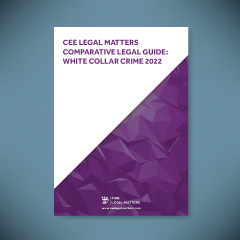According to the 2021 Transparency International report, corruption is growing in the CEE region. Eastern Europe's score in the Corruption Perceptions Index is the second-lowest. It seems that the trend of decline in democracy indexes in the region is also contributing to these higher corruption levels.
The purpose of this guide is to offer basic guidance on the legal framework regarding bribery and corruption in the CEE region. The guide allows us to compare how bribery is defined in each of the CEE jurisdictions, if there is criminal liability for corporate entities, what are the sanctions and limitation periods, are there any defenses, and what is the role of anti-corruption compliance. It also refers to the planned developments of national laws in respect of bribery and corruption.
It is visible that the legal framework in the CEE jurisdictions is quite similar and, in a majority of them, it provides for corporate criminal liability for bribery and corruption. Also, although the general requirement for compliance programs in corporate entities is rather not present in regulations (apart from those concerning financial institutions and the like), it is more and more expected in larger organizations, partially due to the whistleblowing laws following the EU Directive on Whistleblower Protection. As there is generally a lack of official guidance on anti-corruption compliance, in most cases, entities may rely on unofficial updates or materials produced by anti-corruption enforcement authorities.
Enjoy the very first issue of the CEELM Comparative Guide on Bribery & Corruption Laws and Regulations in the CEE.


